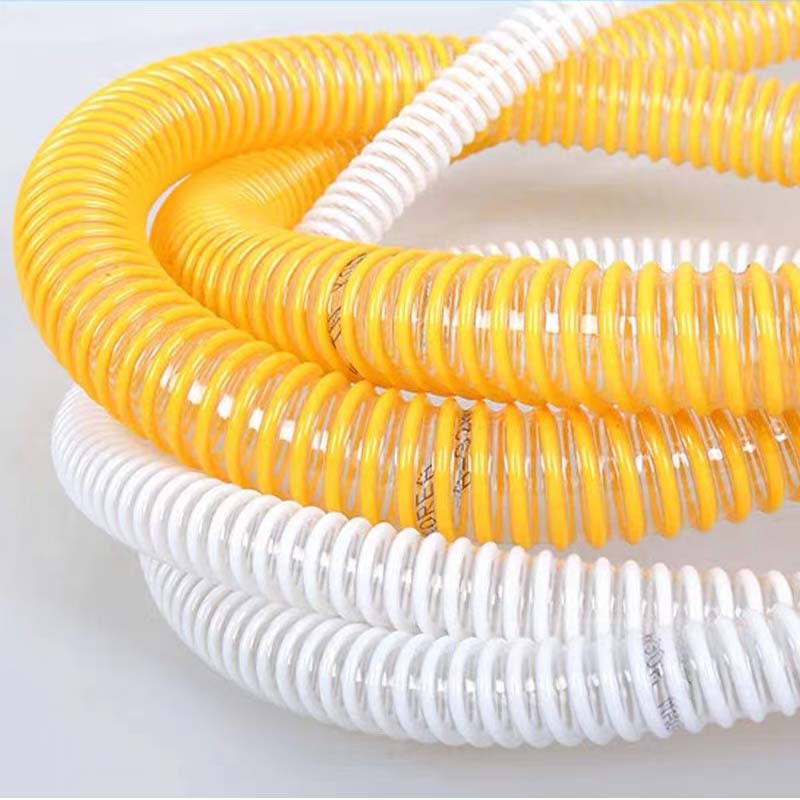Understanding the Importance of Vacuum Pump Hose in Industrial Applications
Understanding Vacuum Pump Hoses Essential Components for Optimal Performance
In the world of industrial machinery and automotive applications, vacuum pumps play a vital role in various processes, including packaging, material handling, and even medical device operations. A crucial component that ensures these pumps function effectively is the vacuum pump hose. This article will delve into the significance of vacuum pump hoses, their construction, maintenance, and key factors to consider when selecting them for specific applications.
What is a Vacuum Pump Hose?
A vacuum pump hose is a specialized tube designed to connect vacuum pumps with other system components, such as filters, chambers, and containers. These hoses are engineered to handle the changes in pressure and ensure a secure seal that prevents air from entering the vacuum system. In essence, the hose is vital for maintaining the efficiency and reliability of vacuum pumps, making it essential in various industries, including food processing, pharmaceuticals, and automotive.
Construction and Material
The materials used in the construction of vacuum pump hoses are crucial for their performance. Most hoses are made from rubber, silicone, or thermoplastic elastomers, depending on the specific application. Rubber hoses are known for their flexibility and durability, making them suitable for a wide range of applications. Silicone hoses are often chosen for their high-temperature resistance and chemical compatibility, while thermoplastic elastomer hoses combine flexibility with resistance to abrasion and chemicals.
The internal structure of the hose is also designed to minimize turbulence and enhance the flow of fluids or air, which is essential for maintaining an effective vacuum. Hoses may have smooth inner surfaces to reduce friction and increase efficiency or reinforced layers to withstand external pressures and prevent collapse under vacuum conditions.
Importance of Proper Maintenance
Maintaining vacuum pump hoses is essential for ensuring the longevity and reliability of the entire vacuum system. Regular inspections should be conducted to check for any signs of wear and tear, such as cracks, kinks, or discoloration. If any damage is detected, the hose should be replaced immediately to prevent potential failures that could lead to operational downtime or damage to other system components.
Furthermore, it is vital to ensure that the hoses are cleaned regularly, especially in applications where contaminants could build up inside the hose. Debris or residue can impair the function of the vacuum system, leading to reduced efficiency and increased energy consumption. By keeping hoses clean and well-maintained, operators can significantly extend their lifespan and optimize the performance of the vacuum pump system.
vacuum pump hose

Selecting the Right Hose
When selecting a vacuum pump hose, several key factors must be considered to ensure optimal performance for a specific application. These factors include
1. Pressure Rating The hose must be capable of withstanding the maximum pressure that the vacuum pump can generate. Manufacturers typically provide pressure ratings, which should be closely examined.
2. Temperature Range Vacuum applications may involve extreme temperatures. It’s essential to choose a hose that can withstand the temperature range of the specific application, whether it involves freezing or high-heat conditions.
3. Chemical Compatibility Depending on the materials being transported through the vacuum, it is crucial to select a hose that is compatible with those substances. For example, certain acids or solvents may degrade specific types of hose materials.
4. Diameter and Length The diameter of the hose affects the airflow and vacuum performance. An appropriately sized hose minimizes restrictions and ensures optimal transfer of materials. Additionally, the length should be determined based on the setup of the system, accounting for bends and turns that could affect efficiency.
5. Fittings and Connections Proper fittings and connections are essential for maintaining a secure seal within the vacuum system. The compatibility of fittings with both the hose and the vacuum pump should be verified.
Conclusion
Vacuum pump hoses are a critical component in any vacuum system. Their proper selection, regular maintenance, and appropriate use can lead to increased efficiency, extended equipment life, and reduced operational costs. By understanding the role and function of vacuum pump hoses, industries can enhance their processes, improve product quality, and ensure that their operations run smoothly. Whether in manufacturing, laboratories, or commercial applications, the importance of vacuum pump hoses cannot be underestimated. Investing in quality hoses and adhering to maintenance protocols will yield significant benefits in the long run.
-
Top Quality Oxy Acetylene Hoses for Sale Fit for Welding DemandsNewsJul.28,2025
-
The Future of Pneumatic Air Tubes in IndustryNewsJul.28,2025
-
Superior and Reliable LPG Hose Pipe Solutions for Every NeedNewsJul.28,2025
-
Exceptionally Durable and Versatile Premium Braided PVC TubingNewsJul.28,2025
-
Best Adapters for Connecting Garden Hose to PVC Pipe ConnectionsNewsJul.28,2025
-
The Essential Role of LPG Hoses in Safe and Efficient Gas DistributionNewsJul.16,2025














